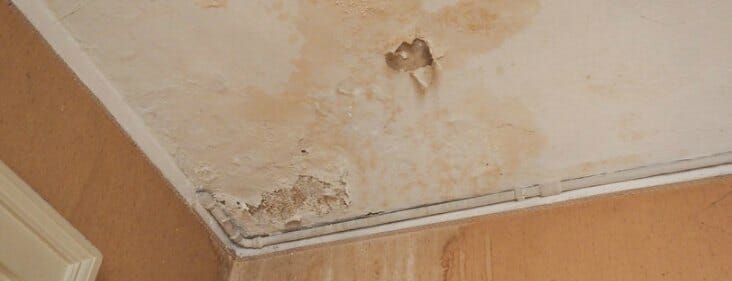Preventative Measures for the Six Most Common Causes of Water Leaks in Residential Spaces
Preventative Measures for the Six Most Common Causes of Water Leaks in Residential Spaces
Blog Article
How do you feel with regards to Common Water Leaks In House?

Leaks not just trigger waste of water but can additionally trigger unnecessary damages to your house and advertise unwanted natural growth. By looking and also understanding for day-to-day circumstances that cause leakages, you can protect your residence from future leaks and also unnecessary damages.
Intruding roots
Most water leakages start outside your home rather than inside it. If you observe a sudden decline in water pressure, say in your faucet, take time to head out and also examine your backyard. You might notice damp spots or sinkholes in your lawn, which might indicate that tree origins are attacking water lines causing water to leak out. You can have your plumber look for invasion, specifically if you have trees or shrubs near your residential property.
Corroded water supply
As time passes by, your plumbing system ages and rust such as corrosion may start gnawing the pipes. This may be the source of staining or bending on your pipes. This calls for an evaluation with your plumber promptly. Think about changing the pipelines considering that they are at a greater danger of deterioration than the newer designs if our plumbing system is old.
Defective Pipe Joints
The point at which your pipes connect is frequently the weakest link in the waterline. Pipe joints can degrade with time, causing water leakages. However, most of pipeline joints are not conveniently visible. If you have loud pipelines that make ticking or banging noises, particularly when the warm water is switched on, your pipe joints are most likely under a lot of pressure. It is advisable to have your plumber inspect your system yearly.
Immediate temperature changes.
Extreme temperature changes in our pipelines can cause them to increase as well as get suddenly. This expansion and tightening may trigger cracks in the pipelines, especially if the temperature level are below freezing.
Poor Water Connectors
At times, a leakage can be triggered by loosened hose pipes and also pipes that provide your home appliances. Generally, changing is what causes the loosened water Connections. You may locate in the case of a washing machine, a tube may spring a leakage due to shaking throughout the spin cycle. In case of a water links leakage, you may observe water running directly from the supply line or puddles around your devices.
Clogged Drains
Blocked drains may be irritating as well as inconveniencing, yet they can in some cases wind up creating an overflow resulting in break pipes. Keep eliminating any kind of materials that may decrease your drains that might block them to stay clear of such inconveniences.
All the above are root causes of leaks yet not all water leaks arise from plumbing leakages; some leakages could come from roofing system leaks. All leakages need to be repaired right away to stay clear of water damages.
Leakages not just cause waste of water but can additionally create unneeded damages to your home and promote unwanted organic development. By looking and understanding for everyday situations that trigger leaks, you can secure your residence from future leakages and also unneeded damages. Today, we will look at six leak creates that might be creating your pipelines to leak.
At times, a leak can be triggered by loose hoses and pipelines that provide your devices. In situation of a water connections leak, you may observe water running straight from the supply line or puddles around your appliances.
How To Check For Water Leak In Your Home
How To Check for Leaks
The average household's leaks can account for nearly 10,000 gallons of water wasted every year and ten percent of homes have leaks that waste 90 gallons or more per day. Common types of leaks found in the home are worn toilet flappers, dripping faucets, and other leaking valves. These types of leaks are often easy to fix, requiring only a few tools and hardware that can pay for themselves in water savings. Fixing easily corrected household water leaks can save homeowners about 10 percent on their water bills.
To check for leaks in your home, you first need to determine whether you're wasting water and then identify the source of the leak. Here are some tips for finding leaks:
Take a look at your water usage during a colder month, such as January or February. If a family of four exceeds 12,000 gallons per month, there are serious leaks.
Check your water meter before and after a two-hour period when no water is being used. If the meter changes at all, you probably have a leak.
Identify toilet leaks by placing a drop of food coloring in the toilet tank. If any color shows up in the bowl after 10 minutes, you have a leak. (Be sure to flush immediately after the experiment to avoid staining the tank.)
Examine faucet gaskets and pipe fittings for any water on the outside of the pipe to check for surface leaks.
Undetected water leaks can happen without the home or business owner even realizing. If you suspect a water leak, but not able to find the source. It is time to contact a professional water leak detection service, The Leak Doctor.
How To Find a Water Leak In Your Home
https://www.leakdoctor.com/blog/How-To-Check-For-Water-Leak-In-Your-Home_AE197.html

Hopefully you enjoyed our topic about How to Find Water Leaks. Thanks a lot for finding the time to read our posting. If you please take a moment to distribute this page if you appreciated it. Thanks a lot for your time. Come back soon.
Get Quote Report this page